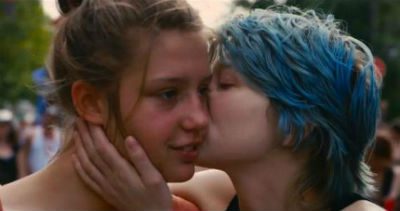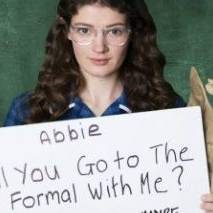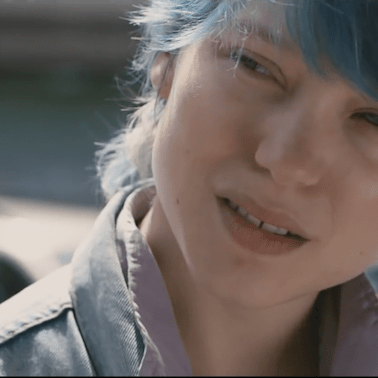
I almost wish I could lobotomize the part of my brain that saw it, just so I can go back and watch it again for the first time.
If you haven’t already seen the French film Blue is the Warmest Colour then I am incredibly jealous of you. I almost wish I could lobotomize the part of my brain that saw it, just so I can go back and watch it again for the first time. Yes, it is that good! Directed by acclaimed, French filmmaker Abdellatif Kechiche and based on Julie Maroh’s graphic novel of the same name, Blue is the Warmest Colour was the sensation of last year’s Cannes Film Festival. Having been awarded the Palme d’Or by the festival judges, it comes as no surprise that this film has gone on to win over audiences worldwide since its release.
Adèle (played by newcomer Adèle Exarchopoulos) is a young woman whose longings, ecstasies and losses are charted across a span of several years. Still, in high school when the story begins, Adèle is at the outset of discovering who she is. After her first sexual experience with a doting male classmate leaves her feeling like something is amiss, Adèle’s life changes when she encounters a mysterious blue-haired girl. Emma (Léa Seydoux Farewell My Queen, Sister) is an older, art-school creative whom Adèle first encounters at a busy intersection, and later at a gay nightclub. She begins to explore her attraction towards Emma and in doing so learns of true desire, passion and the ups and downs that inevitably come with falling in love.
Blue is the Warmest Colour plays out as an intense and complicated love story. Though controversial for its explicit sex scenes (they are umm…confrontingly high-impact and rather lengthy) it is ultimately a story of emotional transformation and without the incredible talent of the two leading actresses, such a story could easily fall flat or into the cliché pile. Exarchopoulos and Seydoux however, are utterly fearless, bringing such force of feeling to their roles that you feel as though you might be living their lives and riding their emotional rollercoaster yourself.
At the supple age of eighteen, Exarchopoulos had to take time off school in order to shoot the film – a decision I’m sure she has not come to regret. Though both actresses turn in Oscar-worthy performances, it is the young and beautiful Exarchopoulos in particular that will have you in complete awe. Her character’s journey and everything she feels (from arias of joy to sheer devastation) are depicted every inch of the way by her extraordinarily expressive face. Trust me, you won’t be able to take your eyes off of her!
The film pulses with the moodiest of soundtracks. An absolute highlight of this is the party scene in which Swedish singer-songwriter Lykke Li’s song Follow Riversbrings about what can only be described as a non-corporeal atmosphere that will lift your soul and make you want to dance. Though the film is a little long (it clocks in at around 178 minutes!) it is truly unforgettable and easily one of the best lesbian films I have seen.
Make sure you have tissues with you (lots of them!) because the performance of these young girls is nothing short of revelatory and if you’ve ever had your heart broken before, you’re going to relate to the deeply moving story of the beautiful Adèle and her blue-haired girl.




